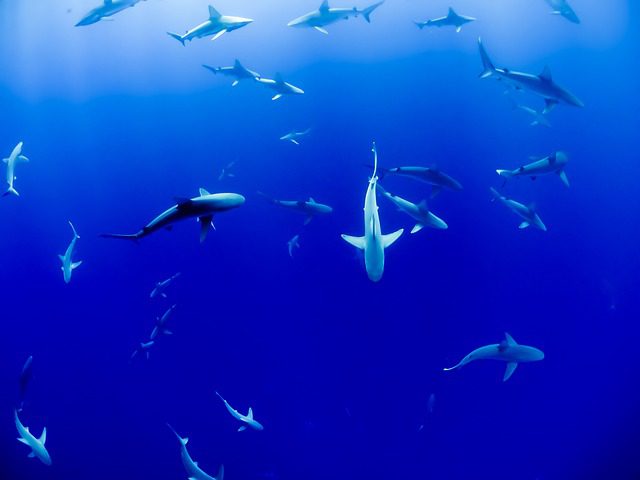12 UNEARTHLY CREATURES UNDER WATER
Did you Know There Are Many Creatures living Under Water?
1 Peacock Mantis Shrimp
Observed within the Indian and tropical western Pacific oceans, the peacock mantis shrimp is a candy-colored crustacean regarded for its ability to quick “punch” prey with its front two appendages.
ln line with Oceana, the international ocean preservation advocacy organization, this shrimp’s punch is one of the quickest moves inside the animal nation—so much so, that it’s strong enough to interrupt an aquarium’s glass wall. however no concerns: They by and large most effective use their fists of metal to interrupt open mollusks and dismember crabs.
2 Pink See-thru Fantasia
Its name makes it sound like a chunk of sexy lingerie, but don’t be fooled: the pink see-thru fantasia is a sea cucumber, found about 1.5 miles deep into the Celebes Sea within the western Pacific, east of Borneo.
It was best determined a little over a decade in the past, back in 2007, but the curious sea cucumber has a survival tactic that points to its longtime evolution: bioluminescence to keep off predators. The red see-thru fantasia is named for its transparent skin, via which its mouth, anus, and intestines are all visible.
3 Frogfish
It’s so easy to miss the frogfish, because those kinds of anglerfish (there are over 50 species of them) are nearly identical to their environment—frequently coral reefs. They resemble sponges or algae-blanketed rocks and are available in quite much each shade and texture imaginable. some frogfish even use their camouflage not to hide, but rather, to imitate poison sea slugs.
No matter their appearance, one aspect all species of frogfish have in commonplace is their abnormal mode of locomotion. even though they can swim, maximum walk along their pectoral fins, which have evolved into arm-like limbs, such as a joint that resembles an elbow.
4 Ribbon Eel
Usually seen nestled into burrows around coral reefs, the ribbon eel (now and again referred to as the leaf-nosed moray eel) lives in Indonesian waters from East Africa, to southern Japan, Australia, and French Polynesia. The juveniles start off black, with a light yellow strip alongside the fins, and as they develop, transitions to a bright blue and yellow coloring. these eels are considered “protrandic hermaphrodites,” meaning they trade intercourse from male to lady numerous times for the duration of their lives.
5 Frilled Shark
The frilled shark, Chlamydoselachus anguineus, is one of the gnarliest searching creatures within the sea. If it looks as if an ancient beast, that’s due to the fact it’s miles: the prehistoric creature’s roots go lower back 80 million years. The frilled shark can develop to approximately seven feet long and is named for the frilly look of its gills. although shark in call, these animals swim in a incredibly serpentine fashion, just like an eel. They commonly feed on squid, normally swallowing their prey complete.
6 Radioles
Scientists discovered this strange creature at the extremely good Barrier Reef’s Lizard Island and named it, aptly, the Christmas tree trojan horse. The spiral “branches” are virtually the computer virus’s breathing and feeding apparatuses, while the malicious program itself lives in a tube. these tree-like crowns are included in hair-like appendages called radioles. those are used for respiratory and catching prey, however they can be withdrawn if the Christmas tree computer virus feels threatened.
7 Box Crab
Like such a lot of different sea creatures, the box crab is a master of cover. In this case, the crustacean—which generally continues to the seabed—buries itself below the sand, with just its eyes sticking out from the mucky depths.
One of the most captivating factors of the box crab’s existence cycle is its mating behavior, which literally redefine what it approach to be swept off your ft. while the male box crab has observed its mate, it grasps onto her with its claws and carries her round the ocean ground until she molts her shell.
8 The Squidworm
Researchers with the Census of Marine Zooplankton first determined the squidworm in 2007 at some stage in a cruise in a remotely operated vehicle a few 1.eight miles underwater. The funky-looking fish is called for the 10 appendages sticking out from its head, which seem like tentacles. The squidworm makes use of these to accumulate particles falling from the open waters above, known as “marine snow.”
9 Large Isopod
These guys are local to cold, deep waters and might turn out to be pretty massive; in 2010, a remotely operated underwater automobile located a large isopod measuring 2.5 toes. these crustaceans, which sort of resemble a massive woodworm, are carnivores and generally feed on dead animals that collapse from the ocean’s floor. in spite of their discovery returned in 1879, those creatures frequently continue to be a mystery. however, it’s believed that massive isopods grow so huge so as to resist the stress at the lowest of the ocean.
10 Sea Slug
With over 3,000 one-of-a-kind species on file, the nudibranch is a very flexible type of sea slug. these little men are discovered pretty much everywhere, in each shallow and deep waters, from the North and South poles and into the tropics.
There are two wonderful sorts: dorid nudibranchs, which might be easy with feather-like gills on their lower back to assist them breathe; and aeolid nudibranchs, which breath via a distinct sort of organ, also positioned on their backs, referred to as cerata. because the tiny nudibranch lacks a shell, it instead protects itself with brilliant camouflage, supposed as a caution signal. however perhaps their wildest model of all is the capability to quite literally swallow, digest, and reuse stinging cells from prey.
11 Sea Angel
Although they’re known as sea angels, these creatures are simply predatory sea snails. This particular specimen, Platybrachium antarcticum, “flies thru the deep Antarctic waters hunting the shelled pteropods (another kind of snail) on which it feeds,” in keeping with the Marine Census of lifestyles. Sea angels have unique parapodia, or lateral extensions of the foot, that help to propel them through the water.
12 Gulper Eel
The gulper eel (additionally called the pelican eel) is known as for its huge mouth and jaw, which facilitates them to swallow prey entire. they can develop up to 6 ft in length and their large mouths allow them to search out meals that are larger than them. This typically happens when meals is scarce—it’s believed that gulper eels generally eat crustaceans and different small marine animals.


